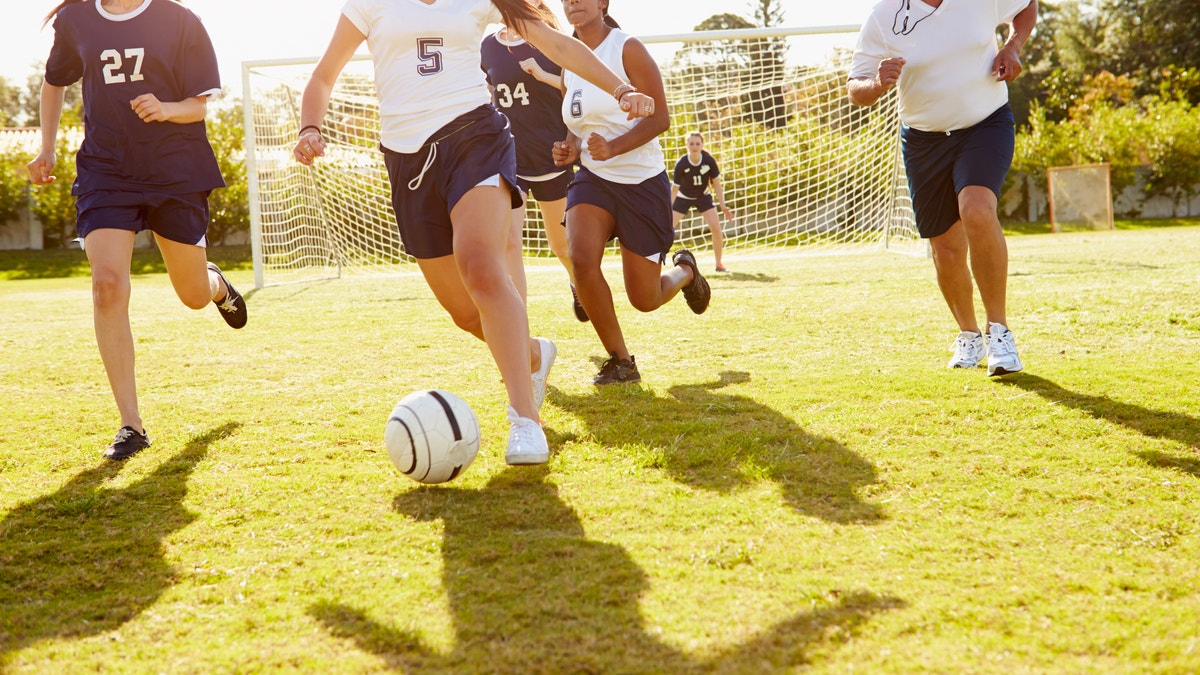
Members Of Female High School Soccer Playing Match (iStock)
As a growing number of teen girls participate in sports, doctors need to watch for health problems that can develop when these athletes exercise too much and don’t eat enough calories, some sports medicine experts argue.
Taken together, the health issues - disordered eating, a halt in monthly menstrual cycles known as amenorrhea and a bone-thinning disease known as osteoporosis - are known as the female athlete triad. Girls may have just one of these problems or a combination, in varying degrees, according to the authors of a recent clinical guidance report in Pediatrics.
“There are physicians that are unaware of the triad and it’s long-reaching consequences,” said Dr. Margot Putukian, director of athletic medicine at Princeton University in New Jersey, who was not involved in the report.
While sports can have tremendous benefits like improved self-esteem and better physical and mental health, doctors, coaches and parents need to be aware that some teens can take training to extremes, Putukian said.
“When overtraining occurs, and elements of the triad surface, the concern is that it can be associated with disordered eating, menstrual dysfunction, with subsequent bone health issues, and then certainly there can be dangerous consequences,” Putukian said by email.
Girls with female athlete triad may be trying to lose weight to improve their performance in sports, doctors from the Council on Sports Medicine and Fitness argue in the paper.
Disordered eating might range from failing to consume enough calories to support intense workouts to avoiding certain foods in an effort to restrict fat or shed pounds, the authors note.
While this can lead to serious eating disorders like anorexia or bulimia, not eating enough calories can also decrease hormones that regulate menstruation and lead to irregular periods or a halt in monthly menstrual cycles. Athletes may be more likely to have menstrual irregularities than teen girls who don’t participate in sports.
Hormonal irregularities and poor nutrition can also lead to osteoporosis. This weakening of the bones can increase the risk of stress fractures and other injuries, and is much more common in athletes than in teens who don’t play sports, the authors note.
“Female athlete triad is the female health consequence of low energy availability,” said Sharon Chirban, a sports psychologist at Boston Children’s Hospital and Harvard Medical School who wasn’t involved in the report.
“The personality most apt to get into trouble is often a high commitment athlete who is willing to do whatever it takes to succeed,” Chirban added by email.
Making sure athletes understand the importance of getting enough calories for intense exercise and the risks of irregular periods are crucial for preventing female athlete triad, the report authors argue.
Well-child visits should include questions about menstruation, exercise and eating habits to help assess whether teen girls may be at risk for developing female athlete triad. Doctors, parents and coaches should also understand that when girls show symptoms of one aspect of the triad, they are also at increased risk for developing other the problems.
“It has been my experience that coaches, parents, pediatricians and family practice physicians are not experienced in caring for athletes, and athletes themselves are not aware of the health risks unique to the triad for female athletes,” said Timothy Neal, a researcher with the athletic training program at Concordia University in Ann Arbor, Michigan, who was not involved in the report.
Paying attention to mental health is critical for preventing and addressing female athlete triad, Neal added by email.
“Parents, athletes, pediatricians, coaches and certified athletic trainers should be aware of signs and symptoms of eating disorders, including those athletes who display signs and symptoms of anxiety, depression, anger, isolation, and other behaviors that may indicate a mental health disorder,” Neal said.
